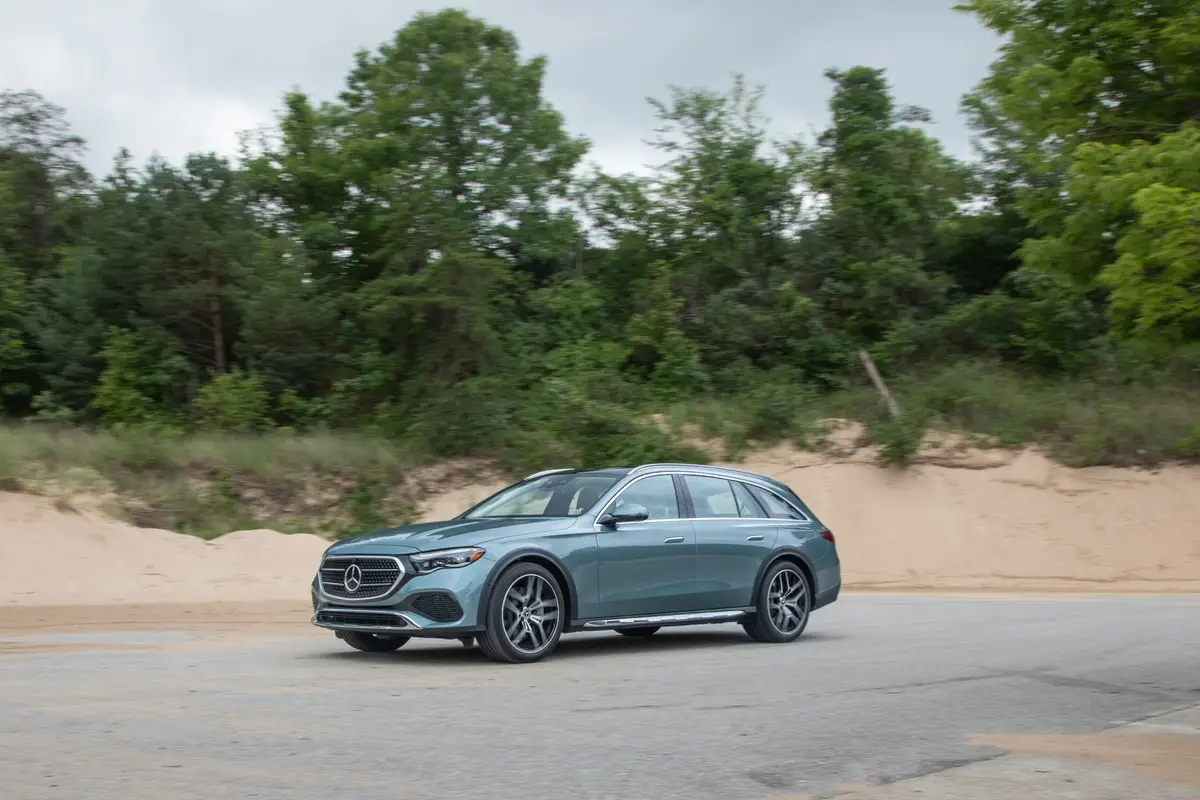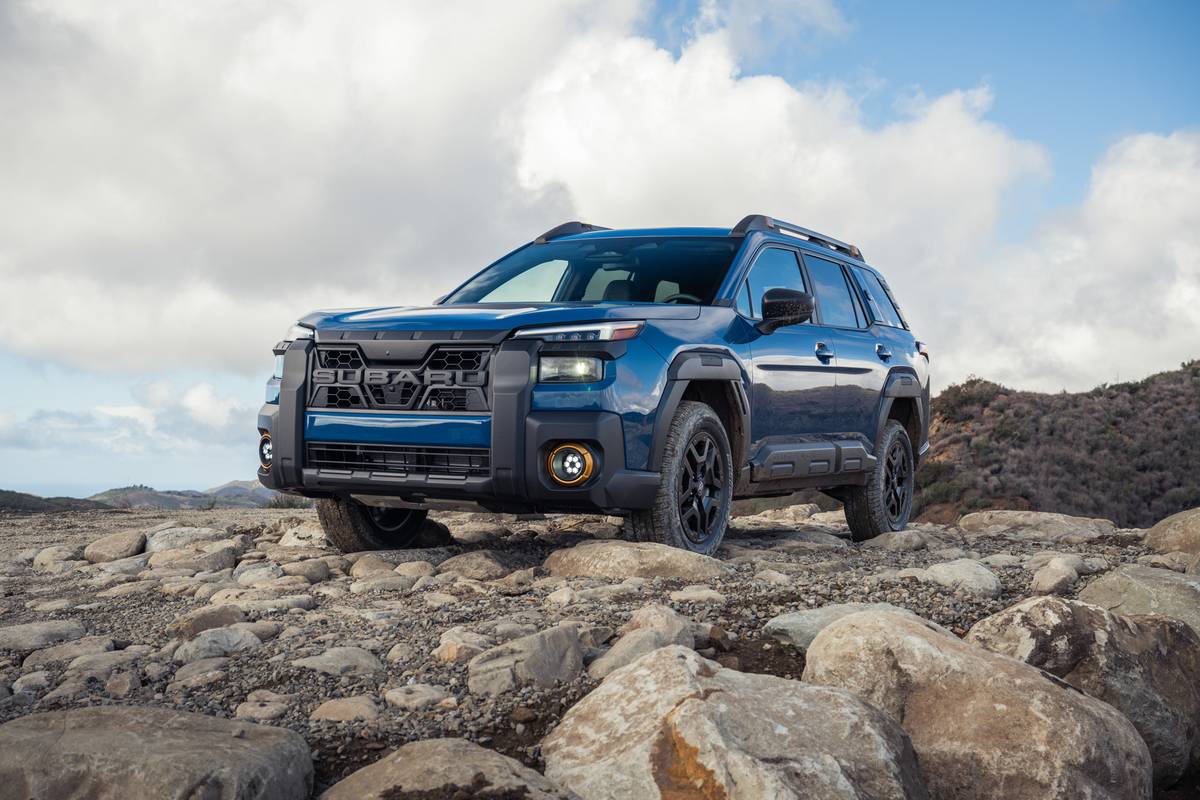Star-Telegram.com's view
One of the best new vehicles for 2007, the redesigned Honda CR-V embodies the concept of the crossover utility vehicle.
But this isn’t one of the flood of new crossovers pouring onto the market this year as the entire genre moves into the mainstream.
The CR-V is one of the vehicles that started the crossover segment, and quickly became America’s best-selling import brand compact crossover after its launch the ’97 model year.
Still the best-selling import brand, the CR-V, enters its third generation this year with a new chassis, a more-powerful four-cylinder engine, and numerous improvements that should reinforce its position in the crowded crossover segment.
I might note here that the CR-V isn’t the best-selling compact model overall; that honor goes to the Ford Escape, which itself has been redesigned for 2008 (and the new model is already on sale).
But Ford has about three times as many U.S. dealers as Honda, giving the Escape quite an edge, especially in smaller communities where no Honda dealer exists.
In cities where the two compete head to head, the CR-V often is the better seller, thanks in part to Honda’s legendary quality and the loyalty that Honda owners shown for the brand.
As the owner of an earlier CR-V model myself, I was eager to test the latest version. Mine was already a very good vehicle. The new CR-V, though, represents a solid improvement.
I appreciate that the changes were evolutionary rather than revolutionary, so my CR-V didn’t become obsolete. Even with some changes, the 2007 model still looks like a CR-V, with no drastic restyling.
Besides having a more luxurious feel, the cabin of the new model is remarkably quieter than its predecessor.
For 2007, CR-V prices begin at $20,600 (plus $595 freight) for the entry-level LX model with front-wheel drive, and $21,800 with all-wheel drive. The midlevel EX model with front drive lists for $22,850, while the all-wheel-drive version goes for $24,050.
Our test vehicle, though, was the top-of-the-line EX-L (luxury) version, which carries a list price of $24,800 with front drive, and $26,000 with all-wheel drive.
We had the all-wheel drive, which is also how my own CR-V is equipped. This system requires no driver input, automatically detecting wheel spin and sending power to the wheels that still have traction.
The only factory option offered is $2,000 package that includes a GPS navigation system with voice recognition, upgraded audio system with six-disc CD changer, and a rearview camera for the EX-L model, for an additional $2,000. This was included on our test model.
The audio upgrade also includes seven speakers, including a large subwoofer. The new CR-V is 1.4 inches wider than the previous generation, but the overall length is 3.1 inches less.
The shorter length is because the spare tire has been moved from the outside of the rear cargo door to a new home under the cargo floor. The new model actually is nearly the same length as the old one without the spare.
While there are other exterior changes, the more-prominent improvements are inside, where Honda designers strove to make the CR-V more luxurious.
The new model still seats just five people, though, which could put the CR-V at a competitive disadvantage. Toyota added an optional third row of seating to the RAV4 with the 2006 redesign, and Mitsubishi has a third row available in the redesigned 2007 Outlander. Even the smaller 2007 Kia Rondo has three rows.
The passenger compartment has been made a bit more accommodating, however. The new CR-V has larger door openings, and a 1.3-inch lower step-in height than the previous model. The seats are wider than before, and are more supportive.
In the cargo area, there is a dual-deck system with a top shelf that can hold up to 20 pounds of gear. Under it is enough room for grocery bags or even a folded baby stroller, Honda says.
Under the hood is a revamped version of the 2.4-liter, inline four-cylinder engine that powered the 2006 model. Some tweaks resulted in a boost of 10 horsepower, so this engine is now rated at 166 horsepower and 161 foot-pounds of torque.
Another disadvantage for the CR-V compared with some of its competitors, though, is that there is no V-6 engine offered. Toyota now offers a 267-horsepower V-6 on the RAV4, the second-best-selling import compact SUV, and the redesigned 2007 Mitsubishi Outlander comes only with a 220-horsepower V-6.
The CR-V’s domestic challengers all have V-6 engines. They include the Escape and its clone, the Mercury Mariner, as well as the Saturn Vue, Chevrolet Equinox, and Pontiac Torrent. The Mazda Tribute, based on the design of the Escape/Mariner, also has a V-6. Some of these vehicles have four-cylinder engines in their base models, though, and with gasoline prices continuing to press upward, the compacts with only V-6 engines could be at a disadvantage if the four-cylinder models have significantly better fuel economy.
Carried over from the 2006 CR-V was the five-speed automatic transmission, but the five-speed manual gearbox is no longer available. Lockup torque converters and other improvements to modern automatic transmissions has made many of them more efficient than manuals, and that’s certainly the case with the CR-V.
Even with the increased horsepower, the new CR-V posts slightly better fuel-economy ratings than last year’s. EPA estimates for two-wheel-drive models are 23 miles per gallon in the city and 30 mpg on the highway vs. 23 city/29 highway last year.
The all-wheel-drive version is rated at 22 city/28 highway, up from 22 city/27 highway last year (automatic). Last year’s all-wheel-drive manual models were rated at just 21 city/26 highway. These ratings will drop significantly for model year 2008, but that’s because the EPA has a new formula for computing mileage, and it will be used for all 2008 models. The new ratings are supposed to be more realistic.
Safety is a major concern of CR-V customers, the majority of whom are women, Honda says. The company has said it intends to become a carmaker that is recognized for its commitment to safety, just like the Swedish automaker Volvo.
To this end, the CR-V has several new standard safety features, including an electronic vehicle stability-control system with traction control, side-curtain air bags for both rows of seats, front seat-mounted side air bags, and antilock brakes. Stability control alone is being touted by safety experts, who say that it could reduce rollover fatalities in sport utility vehicles by 80 percent.
Honda also has given the new CR-V the company’s Advanced Compatibility Engineering body structure, designed to enhance safety in a front-end collision.
Standard on the LX model are 17-inch steel wheels; a tire-pressure monitoring system; daytime running lights; a maintenance-reminder system; an AM/FM/CD audio system with MP3/WMA playback and four speakers, as well as an auxiliary jack for iPod or other MP3 players; air conditioning with air-filtration system; tilt-and-telescoping steering column; a conversation mirror with sunglasses holder; power windows with driver’s side automatic up/down; programmable power door locks; power outside mirrors; retractable center tray table; upper and lower glove compartments; an under-seat storage bin; 60/40-split sliding fold-and-tumble rear seat; and a remote entry system.
Moving up to the EX model brings a one-touch power sunroof with tilt; chrome grille and rear license-plate trim; rear privacy glass; security system; steering-wheel-mounted audio controls; dual-deck cargo shelf; upgraded, AM/FM/CD player with six-disc in-dash changer and six speakers; outside-temperature indicator; and 17-inch alloy wheels.
Our EX-L model came with such additional amenities as leather-trimmed seats and armrests; heated front seats; body-color, heated side mirrors and door handles; and XM satellite radio. There is a center console on the EX-L that can hold up to 24 compact discs (this disappears with the navigation system, however).
Honda now is building the CR-V in the United States for the first time, at the company’s plant in East Liberty, Ohio. The vehicle also is assembled in seven other factories in six other countries, and is sold worldwide.
G. Chambers Williams III is staff automotive columnist for the San Antonio Express-News and former transportation writer for the Star-Telegram. His automotive columns have appeared regularly in the Star-Telegram since 1995. Contact him at (210) 250-3236; chambers@star-telegram.com.
At a Glance: 2007 Honda CR-V
The package: Compact, five-door, five-passenger, four-cylinder, front- or fulltime four-wheel-drive, crossover utility vehicle. Highlights: One of the first of the mini-SUVs, the CR-V has been redesigned for 2007 and rides on a new chassis. It is built on the platform of the Civic sedan, and has carlike ride and handling. Count on Honda’s outstanding quality to provide a good ownership experience. Negatives: No third row of seating or V-6 engine offered. Length: 178 inches. Curb weight: 3,389-3,554 pounds. Engine: 2.4-liter inline four-cylinder. Transmission: Five-speed automatic. Horsepower/torque: 166 HP/161 foot-pounds. Brakes, front/rear: Disc/disc, antilock. Electronic stability control: Standard. Side air bags: Front seat-mounted; side curtain for both rows. Cargo volume: 35.7 cubic feet behind rear seat, expandable to 72.9 with seat folded. Towing capacity: 1,500 pounds. Major competitors: Ford Escape/Mercury Mariner, Mazda Tribute, Toyota RAV4, Suzuki Grand Vitara, Chevrolet Equinox/Pontiac Torrent/Saturn Vue, Subaru Forester, Jeep Liberty, Mitsubishi Outlander, Hyundai Tucson, Honda Element. Fuel capacity/type: 15.3 gallons/unleaded regular. EPA fuel economy: 23 miles per gallon city/30 highway (2WD); 22 city/28 highway (4WD). Base price range: $20,600-$26,000 plus $595 freight. Price as tested: $28,595, including freight and navigation package. On the Road rating: 8.4 (of a possible 10).
Latest news



